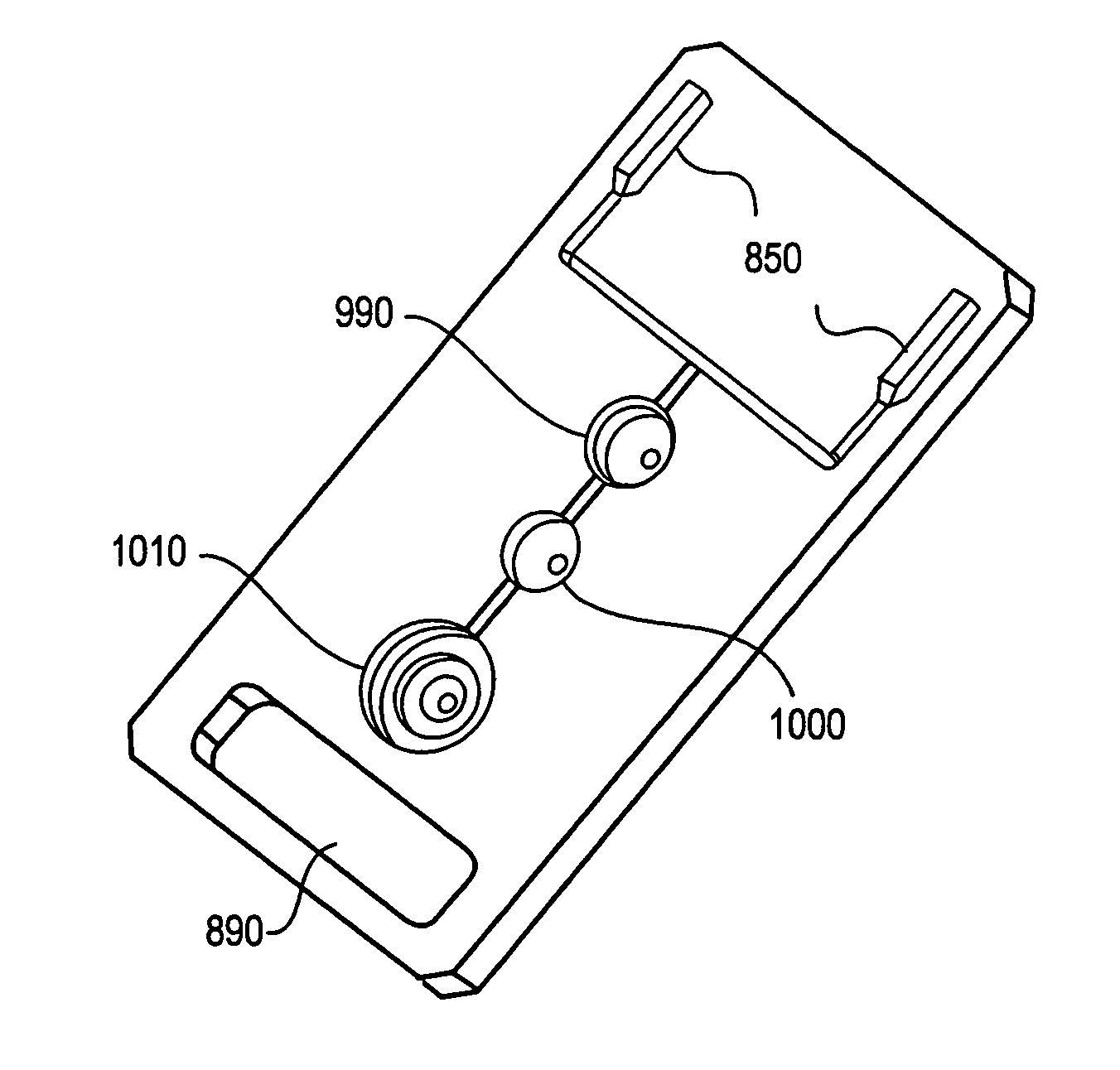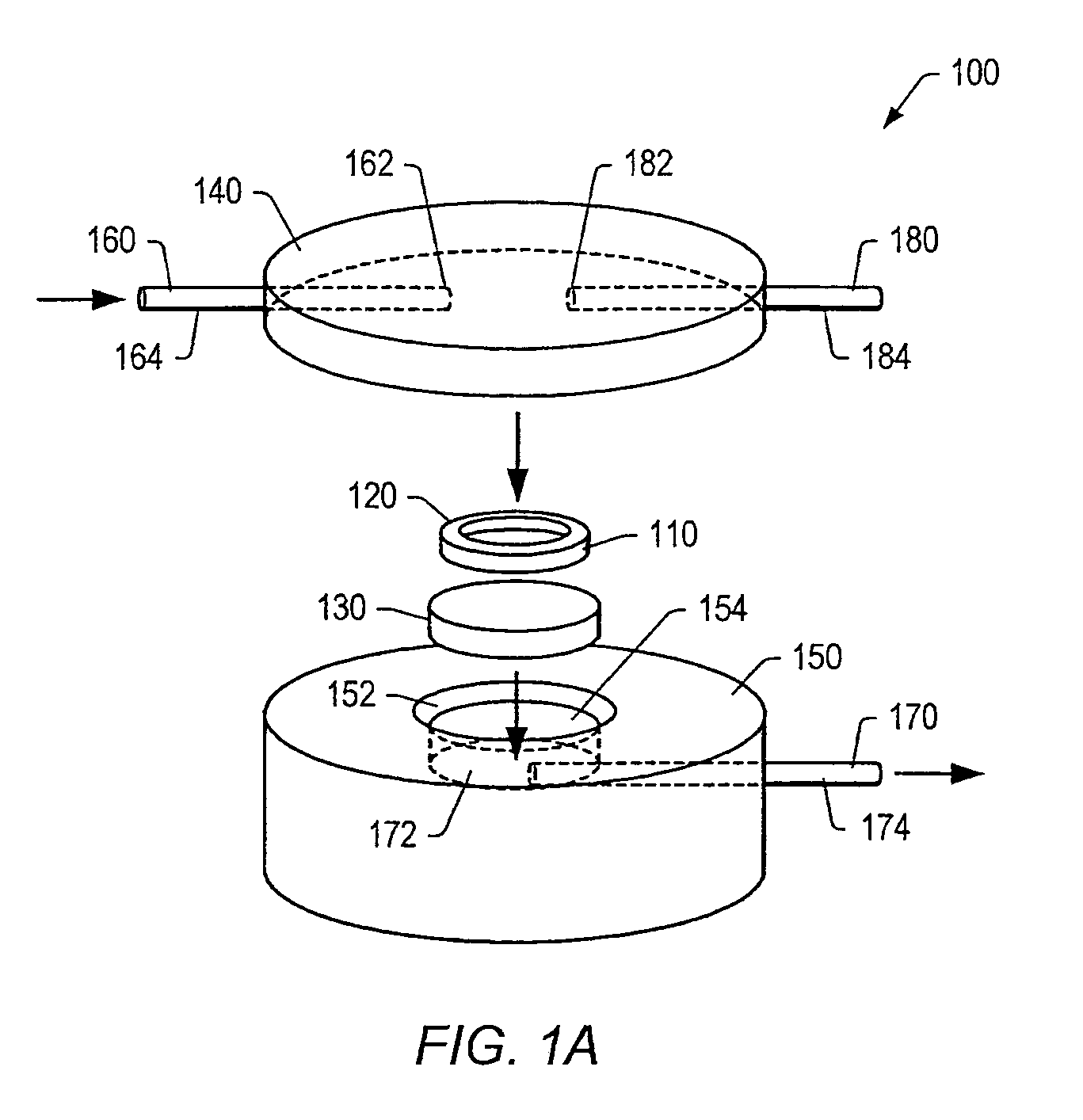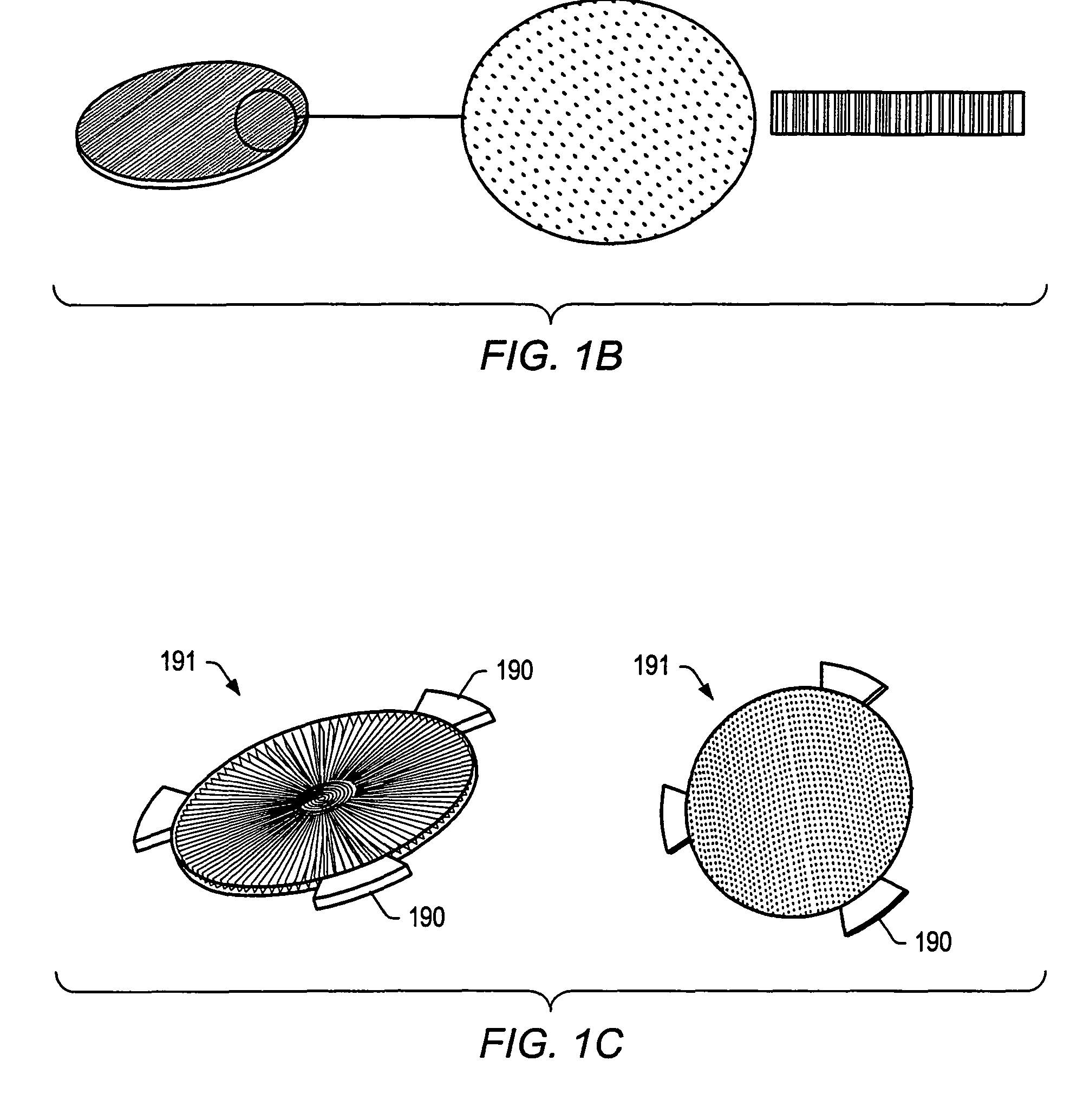Integration of fluids and reagents into self-contained cartridges containing sensor elements
a technology of sensor elements and fluids, applied in the field of liquid analytes detection, can solve the problems of large and expensive instruments used in medical diagnostics, environmental monitoring, bioterrorism-related agents, etc., and achieve the effect of facilitating the digital/optical acquisition of fluorescent signals
- Summary
- Abstract
- Description
- Claims
- Application Information
AI Technical Summary
Benefits of technology
Problems solved by technology
Method used
Image
Examples
example
[0201]Macroporous beads were prepared using the method for biphasic suspension polymerization method described herein. The beads so obtained were analyzed using light and fluorescence microscopy. The transparency of the agarose beads permitted the visualization of the fluorescent beads in different sections of the agarose beads. The presence of pores was confirmed by adding 1 μm fluorescent beads. Using light and fluorescence microscopy, the presence of conduits could not be conclusively determined. The beads accumulated into voids present in the bead, probably the ends of conduits.
[0202]Experiments were initially performed using Merck's Omnipure agarose powder. Low yields of non-spherical particles ranging between 250 and 300 μm were obtained. Experiments performed with an exaggerated amount of the hydrophilic emulsifier, 3.5 mL span 85 resulted in beads without pores but with a rough surface. By reducing the amount of the hydrophobic emulsifier, massive gellation due to the poor s...
examples
Materials
[0276]Polystyrene—polyethylene glycol (PS-PEG) graft copolymer microspheres (≈130 μm in diameter when dry and 230 μm when hydrated) were purchased from Novabiochem. Normal amine activation substitution levels for these particles were between 0.2 and 0.4 mmol / g. Commercial-grade reagents were purchased from Aldrich and used without further purification except as indicated below. Fluorescein isothiocyanate was purchased from Molecular Probes. All solvents were purchased from EM Science and those used for solid-phase synthesis were dried over molecular sieves. Methanol was distilled from magnesium turnings.
[0277]Immunoassays were performed using carbonyl diimidazole (CDI) activated Trisacryl® GF-2000 available from Pierce Chemical (Rockford, Ill.). The particle size for this support ranged between 40 and 80 μm. The reported CDI activation level was >50 μmoles / mL gel. Viral antigen and monoclonal antibody reagents were purchased from Biodesign International (Kennebunk, Me.). Rh...
PUM
| Property | Measurement | Unit |
|---|---|---|
| diameter | aaaaa | aaaaa |
| thickness | aaaaa | aaaaa |
| diameter | aaaaa | aaaaa |
Abstract
Description
Claims
Application Information
 Login to View More
Login to View More - R&D
- Intellectual Property
- Life Sciences
- Materials
- Tech Scout
- Unparalleled Data Quality
- Higher Quality Content
- 60% Fewer Hallucinations
Browse by: Latest US Patents, China's latest patents, Technical Efficacy Thesaurus, Application Domain, Technology Topic, Popular Technical Reports.
© 2025 PatSnap. All rights reserved.Legal|Privacy policy|Modern Slavery Act Transparency Statement|Sitemap|About US| Contact US: help@patsnap.com



